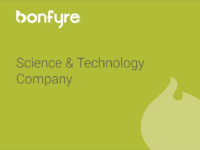Maya is helping EY clients design and curate extraordinary experiences that unleash human power through transformation, determined to make work personally meaningful and deliver long-term value. Maya collaborates with clients to develop strategies, approaches, internal networks and content that shift workforce behavior and mindsets, drive process and technology adoption and leverage data-driven insights to improve decision-making and business outcomes.
What do you often see with clients’ L+D tech stacks? What are the core components?
The demand for a robust enterprise technology platform that can deliver both compliance and self-directed learning is on the rise. Many organizations lean on HCMS (Human Capital Management Systems) or niche L&D technologies to cater to this need. Established players have integrated legacy Learning Management Systems (LMS) into their solutions. However, with a diversified workforce, the challenge lies in platforming these resources to ensure accessibility for all — be it frontline staff, back-office teams, or corporate entities.
How are organizations integrating learning into the Employee Experience?
Two primary trends are emerging in the L&D space:
- Opportunity Creation: Organizations are not only focusing on helping employees develop in their current roles but are also preparing them for future positions. This might involve badging programs or elite collaborations with universities for specialized courses, like EY’s Tech MBAs or Sustainability Masters degree.
- Tailored Learning Programs: While off-the-shelf offerings cater to a broader audience, there’s a growing emphasis on designing learning programs that address both compliance needs and role-specific requirements. The goal is to allow employees to self-develop, especially when time constraints exist, within the flow of work and/or in the moments that work best for them.
At EY, our goal is to ensure everyone has the opportunity to self-develop and access effective “off the shelf” offerings that are curated at scale, but also to design learning programs tailored to the workforce inside and outside of compliance.
Most people don’t have a ton of time to focus on learning, and so it’s critical to have a content catalog, curriculum design, accessibility, and time employees need to take outside of work. Only the most motivated employees will do this on their own time, so how can we ensure team members are aware and take advantage of the opportunities? The “build it, and they will come” approach doesn’t work well for diverse workforces and ways of working.
Implementing persona-driven communications strategies, and proactively alerting employees is paramount – whether through AI or other advanced technologies – that can help employees and employers surface those unmet needs and meet them more in the context of the work that is and needs to be done.
This also means identifying emerging skills that will be important and not confining team members to the traditional learning paths.
However, merely creating learning programs isn’t sufficient. A proactive approach, possibly powered by AI and other advanced technologies, is vital to ensure employees are aware of and can leverage these opportunities. It’s about closing the learning gap by understanding when an employee is most receptive to new information.
What are key learning considerations for non-desk vs. knowledge workers?
The needs of diverse workforces need to be well understood and addressed, with particular emphasis on making learning and personal development easier and attractive. We often get so engrossed in our tasks—whether working on a laptop or directly with clients/customers—that we de-prioritize learning and professional development just to get the job done day to day. We must actively identify and help people see that it is feasible and useful to acquire new skills for their current roles or to prepare them for a shift in roles that will require an investment of time and effort. Addressing one without the other makes the path to progressive development feel daunting.
Frontline employees prioritize customer needs and business goals. While they’re short on operational time, they possess significant potential. Utilizing mobile and service technology, they can quickly access information, be it a page in a manual or guiding a customer. It’s vital, for instance, for a nurse to find relevant details to aid a patient. Such actions not only boost job performance but also enhance outcomes for clients, patients, and businesses.
But that’s just the start. These professionals, like nurses or service technicians, also have aspirations. Some wish to advance in their current domain, while others eye different opportunities. The challenge is: How can we illuminate these paths for them? Are we proactively guiding them based on their skills and strengths, or merely waiting for them to take the initiative?
Knowledge workers have received ample attention, with most current solutions designed for them. Yet, they, too, face hurdles. Despite possibly having a clearer career vision, they are swamped with tasks and often battle against time. If they lack specific credentials or motivation, how can we assist them in valuable learning? It’s crucial to introduce efficient learning pathways and time management strategies to open doors to new opportunities.
What are some of the key gaps in learning and development?
Self-guided learning, though valuable, raises questions around post-learning reinforcement. Additionally, while compliance and regulatory training are pivotal, they often devolve into a “check the box” exercise.
The challenge lies in structuring learning. Defining and cataloging skills is a daunting task, and organizations often struggle with creating flexible structures that can evolve with changing needs. Traditional building blocks of job roles and skill sets, while necessary, often lack adaptability. Innovative solutions are essential, possibly involving AI, to help navigate the complex landscape of skills and job requirements.
Bigger picture, it’s important where possible to invest in learning and development infrastructure that is flexible. For example, the traditional “job” and the “skill” are two structural components we’ve developed for good reason but are very difficult to maintain throughout dynamic business shifts – I have a lot of empathy for the organizational designer out there trying to innovate in these areas!
What’s different about being a leader in 2023?
We used to have a very static answer to this question that was based on a more industrial world, where leaders defined and personified “command and control” styles, establishing a reductive hierarchy and cultural set of norms that disadvantaged some and didn’t allow us to see the potential in others.
As we recognize that imposing industrial mindsets and processes can’t work in the transformative age, we need leaders who are adaptive, authentic and courageous in a way that is much more vulnerable and empathetic, not just directive and confident. We have to be better at things that we used to not pay attention to. Most importantly, we need to unlearn some habits that we now understand have negative impacts on people and the business. We need to find diverse people with this potential and enable them to lead and scale these leadership capabilities everywhere in the world they are needed.
Sometimes, people summarize this as needing diversity in leadership. And this is true. But we also need different things from those leaders – we can’t keep looking for old traits and old capabilities and expect that industrial approaches will work for a new age. It won’t.
We know that this adaptive element of leadership isn’t just about getting the job done, it’s about doing it well,taking care of yourself and your people.
What’s on the horizon for Learning and Development?
How do I know which skills I need? An organization may define skill sets differently from others. If, as an employee, I say I’m skilled at something, do others also? What if I’m not comfortable or in touch with my level of proficiency? It’s not that organizations are doing it wrong, it’s that we need a new set of building blocks that help us identify things outside of our experience and perception. With more operational and experience data, we can not only answer these questions but, at the same time, become more effective at suggesting the right learning at the right time.
This is a keen area of interest for EY and other leading organizations. We have to be flexible enough as a professional services firm to meet needs and, as a result, understand the dynamism and the transformation we live with and co-architect. We have to take our own business, which has stood the test of time, and continually invest in and evolve it in ways that stay aligned with the legal, regulatory, and spatial requirements we have across hundreds of thousands of colleagues. It’s about keeping a “humans at center” ethos even as intelligent machines and technologies transform just about everything.



 6 min
6 min




